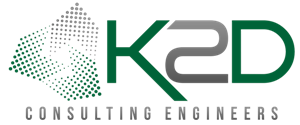
In the competitive landscape of multi-family housing developments, adherence to California’s Title 24 building standards isn’t just a regulatory hoop to jump through—it’s a strategic framework that can set a project apart. Title 24 compliance is crucial, impacting everything from energy consumption and operating costs to environmental footprint and occupant comfort.
From the mechanical engineering feats required to optimize HVAC systems for energy conservation, to the electrical savvy needed to regulate power consumption, and the plumbing ingenuity that underpins water conservation, each component of MEP design plays a pivotal role in meeting these stringent standards. As we unpack the essentials of Title 24 compliance, we’ll delve into the importance of each MEP discipline and how they coalesce to form the backbone of successful, sustainable multi-family housing development.
The Importance of Title 24 Compliance in Multi-Family Buildings
For multi-family buildings, where efficiency scales with size and the impact of every decision is magnified, the importance of getting it right the first time cannot be overstated. K2D’s MEP experts bring a wealth of expertise and a forward-thinking approach to mechanical, electrical, and plumbing designs that not only meet but exceed the rigorous standards of Title 24.
By adhering to Title 24, developers are guaranteed to deliver buildings that not only provide a high standard of living but also operate with peak energy efficiency. It’s a dual focus on comfort and conservation that K2D Consulting Engineers understand well. We see the guidelines not as constraints but as pathways to innovation in mechanical, electrical, and plumbing systems that redefine the efficiency of multi-family dwellings.
Mechanical Compliance: Optimizing HVAC
HVAC systems in multi-family housing must address complex demands for comfort while meeting California’s stringent Title 24 energy efficiency standards. The approach to these mechanical systems starts with a precise evaluation of thermal loads and the use of advanced simulation to ensure accurate climate control.
Incorporating energy recovery ventilation (ERV) helps to minimize energy expenditure by recirculating air within the building. Zoned climate control technologies allow for independent heating or cooling in different sections, avoiding energy waste.
Selecting high-efficiency equipment is crucial—choosing the right boilers, variable refrigerant flow (VRF) systems, and smart thermostats can make a significant difference. These elements work together to create an HVAC system that not only complies with Title 24 but also promotes a sustainable and cost-effective living environment.
Electrical Compliance: Regulating Power
The electrical systems in multi-family developments are pivotal for achieving Title 24 compliance, where precision in regulating power consumption is paramount. A detailed approach to electrical efficiency involves designing electrical systems that reduce load, optimize usage, and incorporate renewable energy sources where feasible.
Lighting plays a significant role in electrical design under Title 24, necessitating the use of LED fixtures and advanced control systems such as motion sensors and dimmers to reduce unnecessary power usage. The integration of daylight harvesting technology further enhances efficiency by adjusting indoor lighting in response to natural light levels.
Power systems must be robust yet flexible, capable of supporting a range of household appliances and common-area utilities while maintaining efficiency. The design includes dedicated circuits for high-demand appliances and the potential integration of smart meters to allow residents to monitor and manage their energy use effectively.
Plumbing Compliance: Conserving Water
In the realm of multi-family housing, plumbing design is integral to achieving Title 24 compliance, focusing on water conservation and efficient distribution. The objective is to create systems that minimize water use without compromising service quality, aligning with California’s progressive water efficiency standards.
To optimize water usage, the design incorporates low-flow fixtures in kitchens and bathrooms, which significantly reduce water consumption. For heating water, the implementation of on-demand or tankless water heaters contributes to energy savings by providing hot water only as needed, eliminating the standby energy losses associated with traditional storage water heaters.
Advanced metering infrastructure is another component, allowing for precise monitoring of water usage. This can help identify leaks or inefficiencies in the system, facilitating prompt maintenance actions and ensuring that the building’s water systems operate at peak efficiency.
Integrating Title 24 in Your Multi-Family Housing Development
For developers and architects poised to embark on multi-family housing projects, the integration of Title 24 standards represents a commitment to efficiency and sustainability. The comprehensive application of these standards within your development’s mechanical, electrical, and plumbing systems is not merely a regulatory obligation—it’s a strategic investment in the future livability and marketability of your property.
Step into the forefront of California’s sustainable development movement with K2D. For insights on how to integrate Title 24 into your multi-family housing project, or to arrange a comprehensive consultation, connect with our team. We are dedicated to elevating living standards and driving environmental responsibility, crafting spaces that stand as a testament to thoughtful and progressive design.
For further information and/or to schedule a consultation please contact K2D Reach at 310.935.3773 or visit www.K2D.com to learn more.
